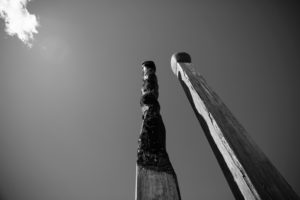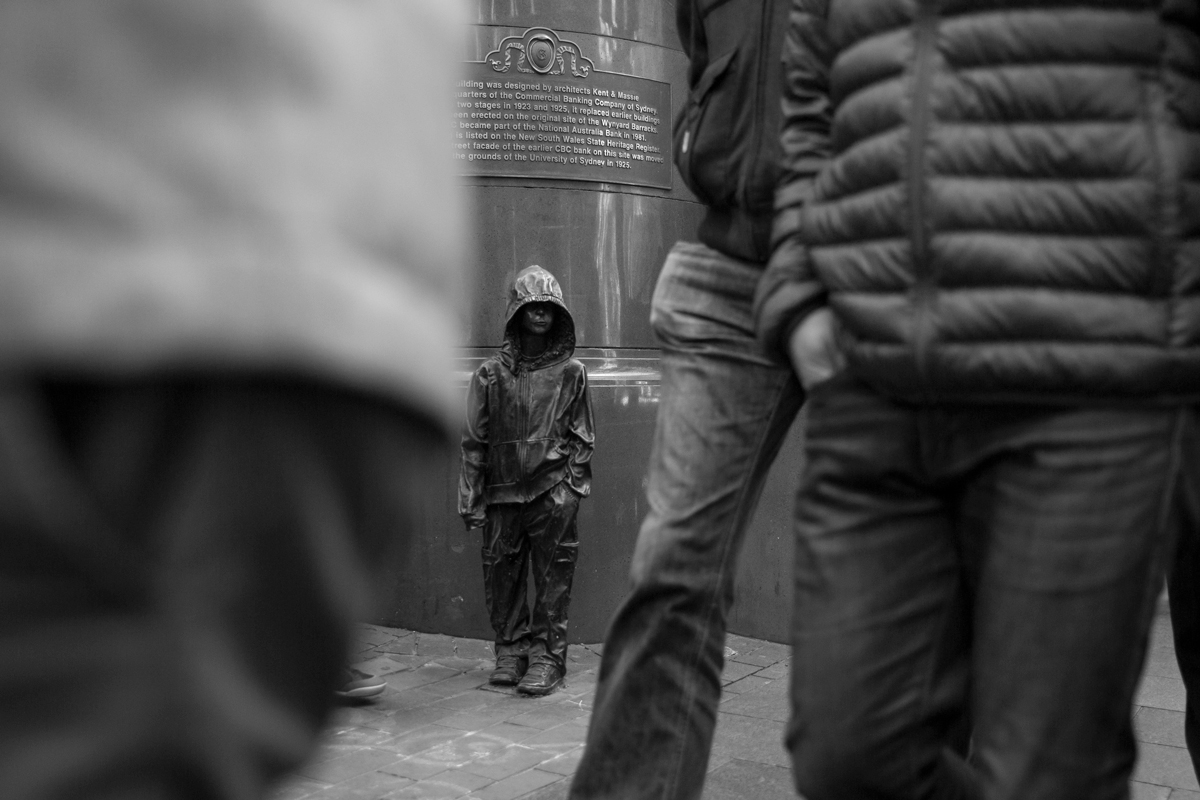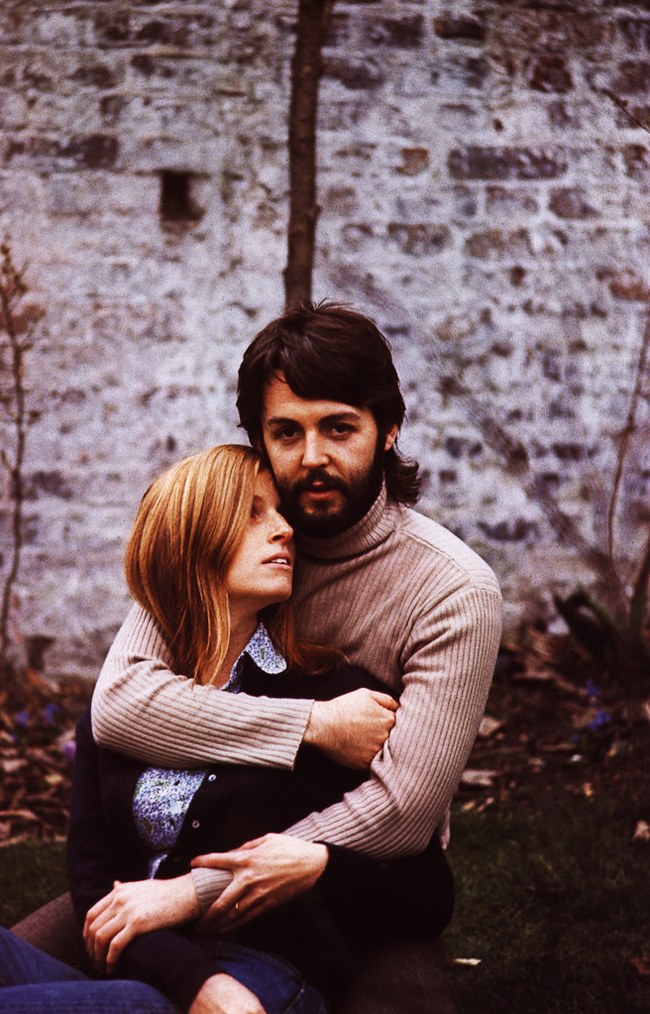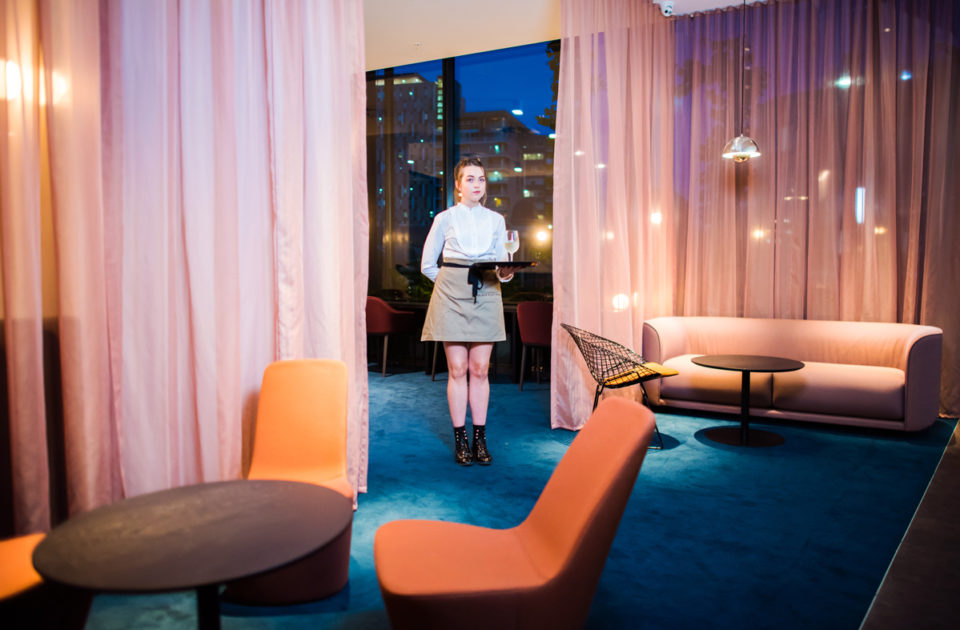In the wake of the Confederate statue controversy that is swamping the United States, calls have gone up for a rethink about local memorials to Captain Cook and Arthur Phillip. NEIGHBOURHOOD takes a good hard look at some other Sydney monuments that might be more deserving of the wrecking ball…
Sir Richard Bourke (Mitchell Library)
In response to reports of settlers purchasing land by treaty with Aborigines, the Governor of New South Wales, Richard Bourke, banged out a hasty Proclamation on October 10, 1835. It declared all such treaties “void and of no effect against the rights of the Crown; and that all Persons who shall be found in possession of any such Lands as aforesaid, without the license or authority of His Majesty’s Government … will be considered as trespassers”, thereby consigning generations of Indigenous Australians to the status of “intruders” on Government property. Bourke’s Proclamation rubber-stamped the idea of terra nullius, a notional Australia inhabited by nobody at all until the British arrived, which, despite being patently stupid, was a legal ratchet until the Mabo decision rendered it obsolete in 1992. Bourke’s statue is notable for the generous package awarded him by the sculptor, a bulbous fantasy of which there is no mention in the Colonial scriptures.
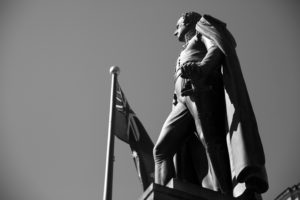
Sir Richard Bourke, State Library, Sydney
William Bede Dalley (Hyde Park)
On September 9, 1886, 16-year-old Mary Jane Hicks was taking a cab ride through Sydney’s Waterloo area when the driver, Charles Sweetman, took a break from his duties to sexually molest his fare. Hearing the girl’s screams, a squadron of local “larrikins” chased Sweetman off, then, taking Mary Jane to a clearing in the bush, proceeded to gang rape her for close to two hours before police showed up. Nine youths, all under 20 years old, were sentenced to death by a cranky judge (Sweetman got the lash and a gaol term), but a noisy protest for clemency saw five of the sentences reduced to a decade in prison. Leading the protest was William Bede Dalley, barrister and public defender. Dalley noted that the victim had not been a virgin at the time of the crime, and argued that the prosecution of rape cases was for “the protection of absolutely pure women” – the death penalty a deterrent designed as protection “for this class of persons, and for this class alone” – indeed, where some women were concerned, their “conduct was such as to encourage the crime”. Dalley’s statue, which stands in Hyde Park, was a silent witness when, in 2013, 50-year-old Joseph Rosenburg followed an 18-year-old girl into the park and raped her, the trial judge noting that Rosenburg “quite surprisingly seems to hold his victim somehow responsible”. Rosenburg got 11 years; Dalley’s statue has been there for 120.
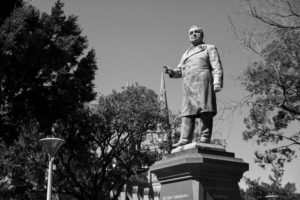
William Bede Dalley. Hyde Park, Sydney
Trim (Mitchell Library)
Trim was Matthew Flinders’ cat, the creature accompanying the English navigator when he mapped the coastline of Australia between 1801 and 1803. As the first celebrity cat of the Colony, Trim is something of a furry Captain Cook, his arrival an Invasion Day of sorts for the hundreds of species of indigenous wildlife to have been all but annihilated by the murderous hordes for which Trim blazed a path from England. Trim’s statue, which lurks outside the Mitchell Library in the city, would greatly offend the desert bandicoot if Felis catus hadn’t gulped the poor critter to extinction already. The few remaining bilby, numbat and western ground parrot would no doubt applaud the removal of this monument to a most unAustralian brute that slaughters millions of native animals every night of the week.
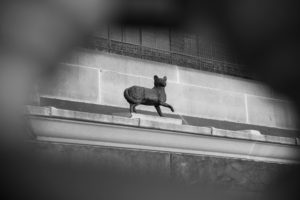
Trim the Illustrious
‘Youngsters’ (Barrack Street)
It was perhaps not artist Caroline Rothwell’s intention to immortalise a shoplifter in bronze, but the mere sight of this life-size truant strikes panic into the heart of anyone who’s ever worked the late shift at a 7-Eleven, or had their mobile phone mysteriously evaporate from their purse during a morning commute. It is altogether fitting that we honour the downtrodden as well as the proper, but it does beg the question as to where it all might end: a future in which our streets bustle with bronze meth heads and loan defaulters is surely not one to which we might look forward.
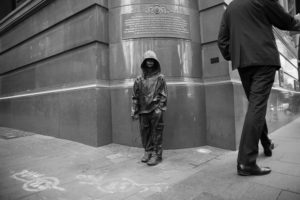
Caroline Rothwell’s Youngsters, Sydney.
‘Il Porcellino’ (Macquarie Street)
A replica of Pietro Tacca’s 1547 original, which resides in Florence, this wild boar would be as clear a case of cultural appropriation as a sombrero, if the feral pig it memorialises hadn’t also made Australia home since 1777. Doubling as a water feature, the pig appears to dribble fluid from its mouth, which can’t be comforting for patients of the Sydney Hospital outside of which ‘Il Porcellino’ loiters – along with such diseases as brucellosis, leptospirosis and the potentially fatal Q fever, feral pigs are known to spread sparganosis which, when left untreated, can lead to blindness. Fortunately, Sydney Hospital specialises in eyeballs. But that doesn’t change the fact we’ve placed on a pedestal the most loathsome and smelly pest to have been introduced to Australia since white settlement began.
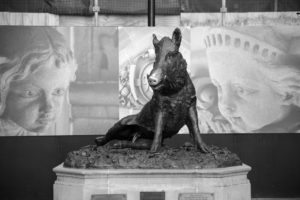
Il Porcellino Gobeirne, Sydney Hospital
‘Almost Once’ (The Domain)
Many are fond of Brett Whiteley’s eye-catching sculpture, but so are pigeons, the Art Gallery of NSW regularly having to fork out for cleaners to hose bird shit off these colossal national treasures. Whether these Big Matches constitute art is still hotly debated. But what cannot be denied is that they are oversized reproductions of smaller things, like the Big Banana in Coffs Harbour or the Big Guitar in Tamworth, both of which were the brainchild of artists unknown to the plain people. Perhaps if the sculpture were removed to a more appropriate place – to Luna Park, for example, or on one of Darling Harbour’s many gift-shop boulevards, the argument would cease forever.
